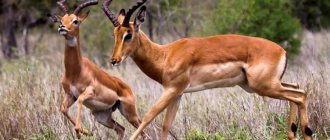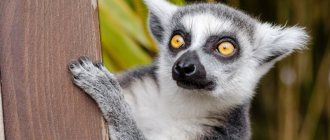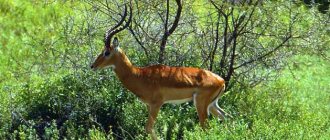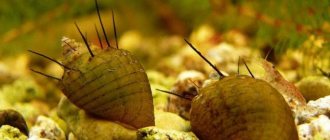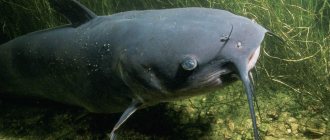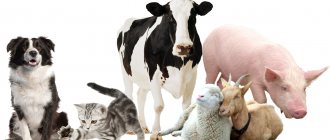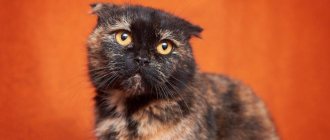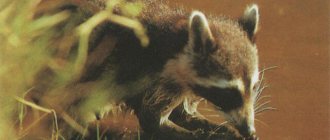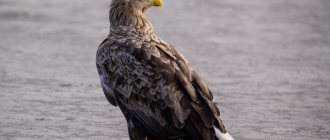Canna
First of all, antelopes are mammals. Moreover, they can feed milk not only to their cubs. An example and clear proof of this is the eland (the genus, species and name of the animal are the same). Their milk is recognized as miraculously healing and highly bactericidal.
It tastes sweet and has a fat content of about 11%. One canna can produce up to 600 liters of milk per year. Such a discovery was made recently in the Askania-Nova nature reserve, where the first domesticated herd of such antelopes in the history of mankind is kept.
Here we immediately note that the historical homeland of eland, of course, is not Ukraine, where the mentioned reserve is located in the Kherson region. Such animals were brought there from Africa, where from time immemorial they lived, being wild. And they grazed in foothill meadows and shrouds in the southern, as well as central and eastern regions of the continent.
When describing the appearance of an eland, one can really get a little confused, since its body seems to be constructed from parts of many animals. The head looks like a goat's. But the horns are not curved, they are straighter, longer and seem to be twisted in a helical manner. The neck is thicker and has a bizarre shape.
It is not clear what to compare the torso and the limbs attached to it with. There's a bit of a horse there. No, it’s still a zebra, only the coloring is not striped, but sandy-reddish on top and whitish below. Some things are taken from the donkey, for example, short legs.
And also from a cow, and not only in the structure of the body, in particular, the tail is distantly reminiscent of a bull, but a little shorter and thicker with a tassel at the end. By the way, it also looks a little like a lion. In general, it is not surprising that medieval artists became so confused.
Of all the antelopes, this species is considered the largest. The size at the withers of individuals is about one and a half meters, the vertical length reaches three meters, and the weight is up to 700 kg. But in the Cannes genus there are even more impressive varieties.
Dimensions
Antelopes vary greatly in size. Antelopes living in open habitats are usually medium to large in size. Antelopes that live in closed habitats, such as ridbucks, are small to medium in size, allowing them to move through the undergrowth. These animals usually have a rounded back and short legs, which allows them to run quickly and deftly dodge predators.
The largest species is the giant male eland of West and Central Africa. It reaches 183 cm in height at the shoulders and weighs up to 907 kg. Its horns can reach 1.5 meters in length. Among the pygmy antelopes of the Neotragini taxonomic tribe, the smallest species is found: the royal antelope of the tropical forests of West Africa. It is no more than 50 cm in length, about 30 cm in width and has a body weight of less than 2.5 kg. Its size is comparable to that of a rabbit.
Photo: www.newsbugz.com
Western eland
This variety is larger than the previous one (height at the withers reaches 175 cm, weight – up to 900 kg). The horns of Western elands are much longer than those of common elands, but are similar in type. In terms of build, representatives of this species are compared to bulls and African buffalos. By the way, both of them are united by the fact that they are all artiodactyls. But most importantly, elands, like all antelopes, belong to the Bovid family. What does it mean?
The antlers of antelopes do not change and do not branch, like, for example, those of deer. They are a horny sheath starting from the frontal bones. Such formations grow throughout life, as a result of which new annular grooves appear on them year after year.
Goats, rams, and cows have this type of decoration. All these domestic animals also belong to the Bovids and are considered relatives of antelopes. Moreover, scientists, in order not to bother, decided as follows. If a representative of this family is not a large or small horned animal, then it is considered an antelope.
Thus, the animals we describe do not constitute a taxon (a single group). This is simply a collection of subfamilies of a wide variety of bovids that are not systematically domesticated. That is why the appearance of an antelope can be the most unexpected. And representatives of different subfamilies may be completely different from each other.
Origin of the species and description
Photo: Wildebeest
Antelopes belong to the order of artiodactyls, the bovid family. Antelope, translated from Central Greek, means a horned animal; they can be different, even very different from each other. These animals are united by the presence of horns and slender legs and the general elegance of movements, otherwise they can have strong differences.
The wildebeest is a large antelope; moreover, it seems to be molded from different animals into one. The body, mane and tail, and even the shape of the head are very reminiscent of a horse, but the horns and disproportionate thin legs ending in cloven hooves are much closer to bulls. A separate subfamily with a self-explanatory name was invented for them - cow antelopes. The characteristic features of an antelope are clearly visible in their gait and graceful running; here they do not look like bulls at all. But while they are grazing, their phlegmatic nature is reminiscent of cows.
Video: Wildebeest
An amazing natural phenomenon that attracts many zoologists, biologists, other scientists and simply interested people is the seasonal migration of a two-million-strong herd from Tanzania to Kenya. At this time, filming, research, and observation of an incredible journey of up to 2000 km of the entire population are being carried out. The spectacle is breathtaking; there is nothing else similar or comparable in nature.
Several species of wildebeest are known, sometimes the names differ according to different sources:
- gray or white-tailed wildebeest;
- striped or blue wildebeest.
These species differ in color and prevalence, but they get along well together, although they do not interbreed. The closest relatives are the topi antelope and the kongoni antelope.
Kongoni
The manner of comparing antelopes with any other animals is by no means an exaggeration or, moreover, a sterile fantasy. And the names of many of these fauna representatives are considered evidence of this. And the first example for us will be the Kongoni genus, whose representatives are otherwise called Cow Antelopes.
Such creatures live in the savannas of Africa and are distributed throughout almost the entire territory of the hot continent. Therefore, they were able to adapt perfectly to the arid climate. Although their fur is thick, it is also very short.
In addition, it has a useful ability - it reflects the rays of the sun from itself. A characteristic external feature of such antelopes is a hump in the shoulder area, which, although small in size, stands out very well on the sloping back of the animal.
Habitats
Many people are interested in where the antelope lives?
The habitat of antelopes depends on their species, so there are animals that live in savannas or steppes, and there are species of antelopes that live in dense forests or even jungles, and there are species of these beautiful animals that live in the mountains. Most antelope species live on the African continent; antelopes are less common in Asia. There are only two species of antelope in Europe - the saiga and the chamois. Certain species, including the pronghorn, live in North America.
Horse antelopes
more than seven dozen species of antelope in Africa And it is this continent that ranks first in the distribution of such animals. Representatives of the genus of Horse antelopes, which inhabit the semi-deserts and deserts of the tropical and southern regions, also live here. They are part of the subfamily Saberhorns.
In general, males of any species of antelope, no matter what subfamily they belong to, have horns, large or small, of the most varied shapes. It shouldn’t be otherwise, because “antelope” is translated from Greek as “horned animal.”
But of different species, females may or may not have similar decoration. But in saber-horned antelopes, representatives of both sexes have horns. These are more than a meter long, massive, arched formations.
The animals themselves are also not small in size, reaching a height of two meters and a weight of more than 250 kg. Equines, like all antelopes, are herbivorous ruminants. They graze in small herds, but try to keep some distance from each other.
They are picky eaters, and therefore suffer from a lack of food. For this reason, and also because of the excesses of hunters, whose trophies they often become, the number of these fauna representatives on the planet is small, moreover, it is constantly declining.
The difficult temperament of antelopes
Blue wildebeest are very unpredictable. Either they graze peacefully among the grasses, or they suddenly break away and gallop across the savannas. They are characterized by short temper and aggressiveness. Females allow only their own into groups, and an attempt by a new antelope to join their “company” ends in a fight and persecution.
They have many natural enemies, encounters with which end in different ways. The strongest and most dangerous for them are lions and crocodiles. A large number of antelopes die at the crossings, so the animals always approach the water with caution and do not dare to go there. Frightened wildebeest scatter in all directions, making high jumps. But they don't always run away. During the day, they may well fight back against a hyena, leopard or cheetah, starting to butt with their horns and kick with their powerful legs.
Sometimes antelopes are the first to attack other animals, frightening and bewildering even elephants. Sometimes they begin to perform a "wild dance" for no reason, kicking, jumping and running in circles, stopping the rampage after just a few minutes. One can only guess about the reasons and motives for this behavior.
Blue antelope
any type of antelope rare . Most often, humanity is blamed for the death of the animal world. This is true. But, as for antelopes, people are not the only ones responsible for their misfortunes. Nature itself made these harmless herbivores prey, food for predators, and a link in the food chain. They have many enemies. And the only means of defense are horns and hooves. And even those, as we will see later, do not always help.
The wonderful blue antelopes that once lived in southwestern Africa also became food for the colonists' dogs. By the beginning of the 19th century, they had already been completely exterminated. This species is now classified by scientists as belonging to the genus of Horse antelopes. The reason for the name was the unusual shade of the fur of such animals.
What do antelopes eat?
Depending on the geography of residence (desert, steppe, forest or mountain), the taste preferences of antelopes also differ. These can be all kinds of herbs, leaves of evergreens and young shoots. There are species that prefer lichens, as well as flowers and fruits.
The antelope has a 4-chamber stomach, which can easily cope with even very tough plant foods. Many species are adapted to long periods without water, quenching their thirst with grass saturated with moisture.
Antelope breed - springbok
Translated from German and Dutch it means “jumping goat”. These antelopes received this name due to their characteristic feature: they jump very high in height - up to 3 meters, and in length up to 15 meters.
The animal has high legs and a long neck. The average height is 80 cm, body length is 1.5 m, weight is 37-40 kg. It lives mainly in southern Africa and southwestern Angola.
Antelope breed - Sassa
It is also called jumping antelope and klipspringer. This is a mountain antelope that has occupied the entire east of Africa. Prefers individual ridges and rock outcrops. It is called a jumper for its ability to easily jump from rock to rock and quickly climb steep slopes.
And she does this thanks to the fact that the sassa moves relying only on the tips of its hooves, which have a rubber-like structure. Its weight ranges from 10 to 15 kg with a height of 50-60 cm.
Antelope breed - Wildebeest
Outwardly, this antelope looks more like a bull, and that’s a stretch. A large body is supported on slender legs, crowned with the head of a bull with a horse's mane and goatee. The wildebeest got its name from its nasal moo.
Body length is about 2 m, height on average is 140 cm, weight varies from 160 to 300 kg. At the same time, they can develop a running speed of up to 55 m/s.
There are two types of wildebeest:
- blue (striped);
- white-tailed (gray).
Wildebeest live throughout Africa, but most are in the eastern and southern parts, especially in Kenya. This species cannot live without water, so twice a year they move after the rains, from south to north and back.
Antelope breed - Impala
It is considered one of the most beautiful antelopes. It has shiny bright red fur, large eyes and very large (up to 90 cm) horns, which are characteristic features of this species.
Impala has a slender, graceful body from 120 to 160 cm and a height from 70 to 95 cm. Females of this animal weigh about 30 kg, and males - up to 65 kg. The body is covered with smooth, shiny hair; small tufts of black hair grow on the hind legs, above the hoof, which is why they are also called black-footed.
They live from the northeastern part of South Africa to Angola, southern Zaire, Rwanda, Uganda and Kenya.
Oryx
This is another species of saber-horned antelope . It is impossible not to mention it, since its name is not just a new hint of similarity with other animals, but is even made up of two names at once. Oryxes were also dubbed oryxes.
This species belongs to the genus of the same name, which includes several other species, mainly classified by habitat. There are East African, Arabian and Saharan varieties. But ordinary oryxes are found in arid regions in the south and east of the African continent.
These are medium-sized antelopes. Of all their other relatives, they are recognized as the most hardy, adapted to survival and unpretentious. Representatives of both sexes and even newborn cubs are armed with straight, sharp spear-horns, reaching up to one and a half meters in adult males.
And this is reliable protection from enemies and predatory attackers. Even the cruel two-legged hunters, no matter how hard they tried, could not exterminate them. And therefore, these creatures, as the personification of all the wonderful qualities listed above, adorn the coat of arms of Namibia - a country where they live in abundance, no matter what.
Features of the antelope
Antelopes are one of the most beautiful and graceful animals on our earth.
There are many types of antelope. They live in different parts of the world.
In addition, we should not forget that they perform a vital function for the conservation of many species of predatory creatures.
We hope that you are interested in this topic and that you have learned a lot of new and interesting things. All the best!
Kudu antelope
Now let's move on to those antelopes that scientists have classified as the Bull subfamily, apparently with good reason. Not all antelopes are able to fend for themselves, like oryxes. The life of many of them consists of every minute fear for their lives, constant fears, even groundless ones, and rapid escapes, sometimes completely senseless.
And kudu serve as an example of this. Their sizes are quite large. The weight of males can reach up to 300 kg. There are also impressive-looking horns. By the age of six in males, they reach a length of about 120 cm. They are shaped like a twisted triple helix.
However, when walking or going to a watering hole, males have to maintain cowardly vigilance, otherwise they will inevitably become prey to predators. And the reason for this, oddly enough, is precisely the horns. They are too heavy and make the animals clumsy. Females are a different matter. Having no horns, they live longer.
But still, horns are not useless for males. They are often used in battles with each other. True, fighters are often forever entangled in skirmishes with their spiral-shaped processes. This entails the death of captive animals, which in this state will either die of hunger and thirst, or become prey to predators. Again!
But, it doesn’t even matter whether the males use their main weapon, their place in the hierarchical ladder is determined by the size of the horns and the number of spirals. Therefore, horns are the pride of the male kudu. But pride does not mean strength and security.
Antelope breeding
Antelopes live in groups and are social animals. A pair created between a male and a female lasts for life. The male guards the territory, and the female is responsible for the offspring, searching for pastures, resting and spending the night. The antelope becomes an adult at the age of 17-18 months, when puberty completes.
Many antelopes are characterized by seasonality when reproducing offspring. They begin mating games in the spring, with the expectation that the babies will be born at a time when there will be water and plenty of food.
Each species calculates this time differently, because pregnancy in females of different species proceeds differently. The larger the individual, the longer it bears the cub. From six months (dik-dik) to 9 months (kanna). As a rule, only one baby is born to a couple, and literally within a few hours it is already on its feet and following its mother.
Nyala
In some ways, nyalas are similar to kudu. They belong to the same genus, being a species of Forest Antelope . They also live like kudu in southern and eastern Africa. Males of this species, also, unlike their female counterparts, have long spiral horns, which cause big problems.
However, it is perhaps appropriate here to recall one more advantage. Hiding from predators, you can climb into the bushes, freeze and be invisible to enemies. And the horns will look like branches. This tactic often proves fruitful and saves lives.
Moreover, an antelope has little chance of escaping, for example, from a lion. However, for camouflage, the color of male kudu is more suitable - gray-brown. But in male nyala it is too dark, while in females it is reddish-brown. White transverse thin stripes complement their outfit.
Nyala eat foliage in thickets not far from water bodies, as well as grass. Mothers and offspring graze in small herds. When the sons grow up, they leave these communities and live independent lives. Outside the mating season, mature males stay separate.
Antelope: general characteristics
The name “antelope” itself does not characterize a separate species of animal; it is a general name for wild representatives of the bovid family. The antelope group includes more than 100 species of ungulates and combines miniature creatures, ranging in size from a hare to large herbivores, the size of a bull.
Antelope is the embodiment of strength, grace and beauty
But antelopes have one thing in common: they all have long, thin and very strong legs. And of course, these creatures are distinguished by their speed and incredible jumping ability, earning a reputation as four-legged sprinters and acrobats. Antelopes have lightning-fast reactions, they develop high speed from a standstill, and are capable of jumping 10 m in length and 3 m in height.
These animals are also famous for their beautiful horns, which have a variety of shapes and sizes. Some individuals have long, slightly curved back horns, reminiscent of samurai blades. The heads of others are crowned with lyre-shaped growths in the form of a crown. And for others, bone jewelry is twisted in a spiral or looks like it consists of helical rings.
Not all antelopes can boast luxurious horns. Most females do not have them at all, and some subspecies are completely devoid of such decoration. And in miniature ungulates, the horns are thin short processes, up to 10 cm long.
The color of antelopes reflects their natural habitat. The fur color of these ungulates has all sorts of sandy shades, serving them as excellent camouflage in deserts and steppes. Some animals have a pattern of black or light stripes on their bodies.
The lifespan of antelopes is determined by their subspecies. Representatives of the miniature antelope family live from 6 to 10 years, the lifespan of their large relatives ranges from 15-20 years.
Elena
Ask a Question
Question to the expert
Why do wildebeests go on the Great Migration?
Unlike many of their relatives, who are content with sparse desert vegetation, Wildebeest feed only on fresh grass. And when the dry season comes in their places, these antelopes go on a journey full of danger and hardships in order to get to places watered by rain and abounding in young greenery.
Roe antelope
And again an antelope with the name of another animal. In general, roe deer are a genus in the Olenev family. But roe antelopes belong to the Bovid family. That is, close kinship, according to the classification, should not be observed.
But at the same time, there is still a significant external resemblance. True, the appearance of roe deer is more proud and graceful. But the roe deer antelope looks as if they put the head of a small skinny donkey on the roe deer, slightly broke off the horns, and then drove it pretty hard.
In addition, this species of African antelope is truly in a deplorable state. Initially, such animals were found in the grassy savannas of South Africa. But they were of too much interest to the hunters, who destroyed them almost completely. Nowadays, roe deer antelopes are found only in National Parks and protected areas.
Population and species status
In the 19th century, wildebeest were hunted by both local tribes and colonial Boers, who fed their workers with the meat of these animals. For as long as 100 years, there was an active hunt for these antelopes, and only in 1870 did people come to their senses, since just over five hundred individuals remained alive throughout Africa.
The second wave of Boer colonizers made every effort to preserve and increase the number of wildebeest. They began to create safe areas for these animals to live. As a result, the number of blue antelopes has recovered, but the white-tailed species has not been lucky and can only be found in protected areas.
Gazelles
Since all antelopes are so diverse in appearance and habits, so as not to get confused among them, we will further tell you about the members of the subfamily of True antelopes. At least we will know who scientists classify as such. And we will get acquainted with representatives of the Gazelle family. Yes, they are indeed considered real antelopes, although many believe that antelopes and gazelles are completely different animals. This is such a confusion.
Of all the antelopes, gazelles are perhaps the most graceful and long-legged. And excellent long-distance runners. Throughout the entire journey, they are capable of maintaining a significant speed of 50 km/h (some varieties up to 70 km/h). These representatives of the fauna live in the savannas of Asia and Africa.
The Gazelle genus includes more than a dozen species. Individuals of each of them differ significantly in parameters. But to keep it simple, let's say that these are medium to small sized antelopes. A remarkable decoration of males are their neat, thin horns, slightly curved at the ends. In females they are either smaller or absent altogether.
Wildebeest
wildebeest (Connochaetes taurinus) can be found in a wide variety of habitats, from dense scrub to open floodplain forests.
However, these antelopes seem to prefer savannas and plains with fast-growing grasses, as well as soil with moderate levels of moisture. The weight of wildebeest ranges from 118 kg to 270 kg. Adult males are usually darker than females. Wildebeests are marked with dark vertical stripes on their shoulders and back. They also have a mane and beard, usually white. Tags Antelopes
Antelope jumper
Scientists also include jumping antelopes, real acrobats of the animal world, living in the east, northeast and southern Africa, to the subfamily of True antelopes. Who really knows how to protect themselves from predators, despite their neat but dense physique and small size (weight on average 13 kg, and height about half a meter).
A lioness, passing by a herd of defenselessly grazing, mouth-watering potential victims from the jumper family, will think a hundred times before attacking them. She will have to spend too much effort on such an undertaking. But small antelopes, seeing a formidable predator, suddenly begin to jump up and down, as if with joy, resembling rubber balls.
At the same time, they rise to a height of approximately two meters. And let the enemies just try to get the dodgers. That is why the population of these animals remains quite dense to this day. But they are not in danger of extinction.
Painting and markings
Antelopes come in different shades of brown and gray. Many species have light and dark markings on the face and body. Some species are characterized by sexual dimorphism in color. Male sable antelope, for example, have a black coat with a white underbelly, while females have chestnut fur.
The addax antelope's fur changes color from gray-brown in winter to cream in summer, which helps them regulate their body temperature. Antelopes living in closed habitats often rely on camouflage to avoid being eaten. The reddish coat makes the bongo, the largest forest antelope, invisible in low light. White vertical stripes on the torso help to distort the animal's shape in the eyes of predators.
Photo: Jack van Belzen
Dik-dik
This is also a true antelope, that is, a member of this subfamily, in addition, it is recognized as the smallest in the world. The dimensions of dik-dik are on average 60 cm in length, their height is about 35 cm, and their weight does not exceed 6 kg. The distribution area of such African antelopes extends from Somalia in the east to Namibia in the south.
Most often these animals are found in thickets of dry bushes. After all, in this environment they feel simply excellent, despite the huge number of enemies, of which the tiny antelopes have about two dozen. Among them are jackals, birds of prey, and snakes. But with all this, the degree of extermination among the Dik-Diks is incredibly low.
Just the tactic of “playing like a rag,” that is, standing still and not moving in the hope that you will not be detected, for such babies (unlike larger antelopes) turns out to be very effective if you show sufficient self-control.
Among dry bushes they are invisible. There is shade here, that is, protection from the scorching sun. And there is always food, even in the driest periods, because the structure of the long muzzle allows the animals to reach through dry branches to the smallest and most inconspicuous leaves.
Dik-dik also have another advantage over their relatives. Other antelopes are most vulnerable when they go to water. There, insidious predators await them in large numbers. But they don’t drink dik-dik. Their bodies have enough moisture inside the plants they consume. And this is another explanation for their high survival rate - a matter where, it turns out, sharp large horns and powerful torsos help little.
Like jumping antelopes, dik-diks are monogamous. For antelopes this is not the rule, but rather the exception. Dik-diks live in pairs. And they mark their territory with the help of odorous glands located in the most unexpected place - in the preorbital region. Of course, why should babies live in herds? They are easier to spot in a crowd.
Lifestyle
Blue wildebeests do not live alone. They gather in small groups, consisting separately of males and females with cubs. During the migration period, they unite in large herds, but even in them they usually stay in groups. Thanks to this, the herd of wildebeest sometimes stretches for tens of kilometers.
Like many other ungulates, they slowly move from place to place, lie on the ground for a long time, chew grass and often play. Their breeding season coincides with the rainy season and begins in April. At this time, males become strictly territorial. They select an area about 100 meters in diameter, mark it with secretions from the eye glands, and fiercely guard it from rivals. They enter into battle with their front legs on their knees.
The calf is born fully formed and can walk immediately. This skill is very important, since the herd is constantly moving, and there are a huge number of dangers around. For the first 8 months, the cub follows its mother everywhere, feeding on her milk. At the age of two and a half years, they are already able to have their own offspring.
Impala
But male impalas have not one, not even three, but several dozen wives who graze in one herd. And during the mating season, the “four-legged sultan” chooses those suitable for mating. The females of the harem are not related. And therefore, in the herd, a certain indifference predominates in relationships.
However, it is customary to help girlfriends “make a mess”, that is, lick each other. Well, and provide other small services. The composition of such a herd is variable. Some members come, some go. And males constantly organize tournaments, challenging the territory and attention of their friends. Of course, both go to the winners.
Impalas are outwardly very perfect antelopes. In addition, representatives of the genus are among the most adapted. They perfectly adapt to the environment and its conditions; not picky about food, unlike some other species. In drought, they are able to do without water, using plant moisture. Black tufts of hair on their hind legs hide scent glands that leave conventional marks in the occupied territory.
Young individuals are famous for their incredible jumps, almost reminiscent of flight. In this way they overcome many obstacles. For example, small rivers, ravines and trees, thickets of bushes. Their jumps are three meters high and ten meters long. Such animals live in open African savannas in the east and south of the continent.
Features of character and lifestyle
Photo: Wildebeest
Wildebeest are herd animals, and they can either graze and move in huge herds, or be divided into smaller ones, 100 - 200 individuals. Typically, the delimitation of territories and fragmentation of herds occurs during the mating season. At this time, males mark the boundaries of the territory with special glands and enter into fights with uninvited guests. The rest of the time, the herds can act together.
Wildebeests are quite calm animals at first glance, but they are extremely anxious. Since they have enough enemies in their lives, they are always on the alert, ready to break loose and run, stick to the herd, and do not separate. Fearfulness, in fact, only helps them, because predators are very sudden and it is better to be vigilant. It happens that wildebeest begin to jump nervously from their front hooves to their hind hooves, jerking their heads at the same time, perhaps this is how they want to show that they are not at all defenseless and are ready to resist.
When grazing, wildebeest are very similar to a herd of domestic cows; they are leisurely, phlegmatic, and chew the cud slowly. But as soon as it occurs to even one individual that they are in danger, in an instant they all, in the amount of up to five hundred individuals, run away at a graceful gallop. Wildebeests take care of their fur; they comb the strands of their tail and mane on the branches of trees and bushes, as well as on the horns of their relatives. They can smooth their short fur with their tongue. They actively drive away flies with their tail.
A very interesting event in the life of animals is the migration in the summer in July from Tanzania to Kenya away from drought to rivers and rain. And also returning to Tanzania back in October.
From the outside it looks like a sudden avalanche; many herds unite and move in a continuous stream of many kilometers. And the main thing is that this happens every year, this migration helps them survive. The determination of the animals is amazing; they are not even attacked by crocodiles in the rivers, for fear of being trampled. Among people there are already those who organize tours to look at this important period in the life of countless animals. It is also possible to observe from an airplane during the flight.
White-tailed wildebeest
It's time to look at wildebeest species . One of them is called the White-tailed or Black Wildebeest. Its representatives are very strange creatures, moreover, even a little ridiculous. Their appearance is unusual, so much so that they have earned the nickname clowns of the African savannas.
The first absurdity is the disproportionately short legs, which is why the animals look very clumsy. Other unexpected elements include a mane, almost like a horse’s, only shorter, as if trimmed and erect, and not so thick; also the white tail resembles a horse's, only a little shabby.
And what is quite strange is that there are tufts of hair in the most unexpected places: above the muzzle, below it - like a beard, and also between the forelimbs. However, although the wildebeest’s legs are short, the animals are able to travel quite long distances on them, alternating between a walk and a gallop.
All antelopes have a very useful property - they are able to see what is happening behind them due to their eyes located on the side. This way they can notice in time a predator sneaking up behind them.
Wildebeest are no exception. And this is very useful, considering that recently the number of these animals has dropped significantly. A couple of hundred years ago in South Africa they were counted in the millions, but now only in the hundreds of thousands.
What is a baby antelope called?
Before giving birth, the expectant mother finds a secluded place in dense thickets or fenced-off small depressions in the soil. Usually one cub is born here. The birth of two or three babies is a very rare event. Cubs are born sighted. Most of them almost immediately stand on their feet, ready to follow their mother.
Regardless of what species newborn antelope cubs belong to, they are all called the same - calves.
Typically, mothers with calves of the same age are grouped together. One of the mothers plays the role of nanny, looking after all the babies while all the other females graze. If the herd is in danger, each mother finds her calf and takes it away.
Blue wildebeest
The second type of wildebeest is larger. The body length of such animals is almost two meters, height is about 130 cm, weight is about 240 kg. Special glands on their snout help them mark territory. They have a bluish-gray color, marked by transverse dark stripes.
These representatives of the fauna live in African savannas, mostly in the east of the continent. They roam in search of food among plains with low-growing grasses and on hills. Sometimes they find themselves in areas covered with thorny bushes and sparse dry trees. They leave places where food supplies have been depleted and immediately go to look for other, more favorable ones, where the grass is greener and juicier.
In Kenya and Tanzania, the local population is accustomed to considering wildebeest as very stupid animals. The fact is that every year during the dry period, huge herds travel a long way to get to watering places. But flocks of crocodiles are already waiting for them there.
In the terrible toothy mouth of these predators, a tenth of the arriving defenseless herbivores die time after time. But the next year they set off again along the same route, so that the outcome of the journey would again be the same.
Description
There are a huge number of species differences between antelopes from different genera, but all antelopes have common features, for example, despite the different body composition, this animal all have graceful, long legs.
The average height and weight of antelopes is as follows; with a body length of 1 m, the weight of an antelope is 150 kg. The largest species of this animal is the common eland, which, with a height of 1.6 m and a body length of 3 m, weighs about 1 ton.
And among the smallest is the dwarf antelope, not exceeding 25-30 cm in height and weighing 1.5-3.6 kg.
Garna
This type of antelope in India and Nepal is found mainly in lowland areas and wastelands. Its representatives are also called Reindeer antelopes. As you can see, again there is a comparison with other animals. And there are also external similarities with deer and goats.
They are medium-sized antelopes with long, spiral-shaped horns worn only by males. The upper part of the animals is colored chocolate brown. The lower body, legs and some areas of the head are white.
Garns are graceful and beautifully built, have great jumping ability and excellent adaptability to external conditions, and are famous for their high running speed (up to 96 km/h). Often during floods, they flee the elements in human settlements, losing all fear of bipeds.
Despite their speed and agility, these herbivorous artiodactyls also often become prey for predators. Among the fierce enemies are red wolves, leopards, tigers and stray dogs.
Natural enemies of antelope
Antelopes share their habitat with many predators, and are desirable prey for each of them. So the list of natural enemies of these artiodactyls is very long; danger awaits them on land, in water, and even from the air. For the most part, the victims are sick and elderly individuals, as well as cubs, but adult antelopes are also attacked by predatory animals.
This antelope failed to escape from a cheetah
And the first on the list of enemies of antelopes are representatives of the cat family, which are common on all continents. In the daytime, cheetahs and caracals hunt horned animals. As soon as twilight falls on the African savannas, lions creep up on the antelope herds. Under the cover of night, leopards and servals lie in wait for the ungulates. Tigers and lynxes never miss an opportunity to satisfy their hunger with a captured antelope. And American pronghorns rarely manage to escape such a dexterous hunter as the cougar.
Not only wild cats love to feast on tender antelope meat. The herbivores are followed by wolves and hyena-like dogs, they try to separate one individual from the herd, and then the whole pack attacks the intended target. Antelopes die from the claws of ferocious wolverines and sometimes end up on the dinner table of bears. And of course, the horned creatures are defenseless against the nightmare of the peaceful inhabitants of Africa - the eternally hungry hyenas who surround their prey and accompany their bloody feast with terrible laughter.
Crossing a river always threatens to end with a meeting with a crocodile
Every visit to a watering hole or crossing a river turns into a game of survival for the antelopes. Indeed, in reservoirs, crocodiles lie in wait for their victims, who quickly pull their catch under the water, and the unfortunate ungulates have practically no chance of escaping from the powerful jaws of the reptile.
Small antelope species have to beware not only of four-legged predators, but also of feathered predators. Eagles and golden eagles are not averse to supplementing their diet with these herbivores, and they hunt not only young animals, but also adult animals. Huge birds circle in the sky, look out for potential prey, then swoop down on the prey with a silent shadow and tear its throat with a sharp beak.
Nilgai
This species, which lives in southern Asia, belongs to the Bovine subfamily. In addition, the name of the antelope means “blue bull” in Hindi. Male nilgai actually have a bluish-gray color, while females are gray-red.
Externally, these representatives of the fauna can be compared with cows, at least in terms of the structure of the body and limbs. And it is this similarity that makes Hindus recognize them as sacred, just as they have since ancient times, according to religious beliefs, considered cows.
In India, this species of antelope is distributed almost throughout the entire territory. There is evidence that these animals were kept in these parts as pets about three and a half thousand years ago. Scientists also suggest that nilgai in ancient times were found in Egypt and Western Asia, but became extinct, like the population in Bangladesh.
But about a hundred years ago, such antelopes were brought to the United States, where they successfully took root and acclimatized in south Texas. They brought offspring, continuing to breed and multiply to this day, and their population size reached 37 thousand heads.
Species of extinct antelopes
The bovid family would have been even more diverse if representatives of some of their genera had not become completely extinct. Some of them disappeared in prehistoric times, others lived on our planet quite recently.
Tragocerus
Genus : Tragocerus
These are some of the oldest antelopes known to science. According to Wikipedia, they appeared 30 million years ago in the dry savannah zones of Central Africa. Numerous remains of Tragocerus indicate that the animals led a herd lifestyle. According to the description, Tragocerus was close to the modern goat, but had a more graceful build. His head was adorned with massive curved horns. Tragocerus antelopes became completely extinct 5.5 million years ago due to climate change - desiccation and cooling.
Northern saiga
Genus : Saiga
Species : Saiga
The northern saiga existed about 250 thousand years ago. For a long time, scientists believed that its habitat was the Asian steppes. But the discovery of the animal’s remains in Yakutia in 1876 became a sensation. It turned out that northern saigas are “contemporaries” of mammoths. The saiga living today in the steppes is absolutely similar in appearance to its ancestor, who lived in harsh climatic conditions. Therefore, saigas are often called living fossils and are considered an important object for studying the northern nature of the ancient world.
Blue antelope
Genus : Horse antelope
Species : Blue antelope
The blue horse antelope is believed to be the first large mammal in South Africa to go extinct in historical times. They called her that because of the bluish tint of her skin that shows through her fur. The animal was slightly smaller than other representatives of equine antelopes, but otherwise differed little from them. It looked like this:
- graceful build;
- long legs;
- short mane;
- medium-sized horns in the shape of curved sabers.
The extinct blue antelope was picky when it came to food. She ate only a few types of tall perennial grasses. Its habitat was very small - 4,000 square meters. km. The reason for the disappearance of the blue antelope was the merciless hunting of it.
Red gazelle
Genus : Gazelle
Species : Red gazelle
There is very little information about this extinct species. It is only known that these were inhabitants of the mountainous terrain in northern Africa. What they looked like can be judged from stuffed animals kept in museums in London and Paris. The last red gazelle was hunted in 1894.
